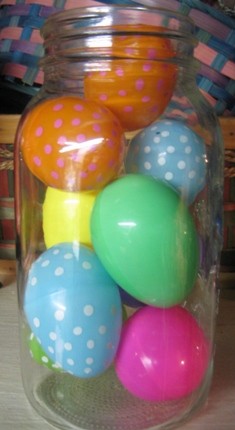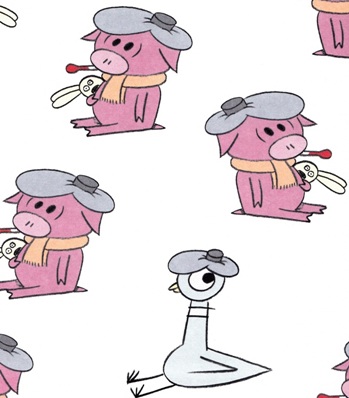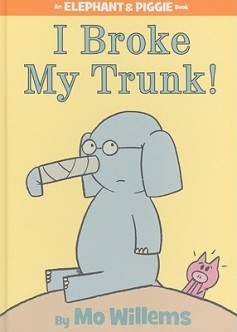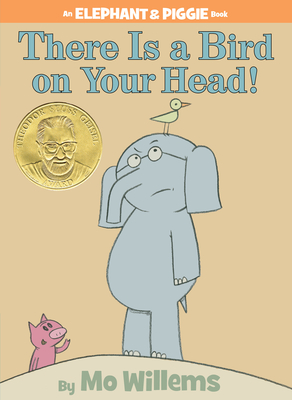
This is NOT the kind of egg I'm talking about...
Parents who are really into children’s books always talk about loving books that speak to them on a variety of different levels. Often times, they’re talking about the book’s sense of humor – when the writing is smart enough that it appeals to kids on one level, while delivering a barrage of references and in-jokes that only adults can appreciate. (I call that “The Muppet Show Effect.”) As a vaguely obsessive-compulsive geek, I definitely understand the giddy thrill of discovering hidden meanings on other levels, which is probably why I’ve lately become pre-occupied with finding hidden easter eggs in the artwork in children’s books.
If you’ve never heard the term “easter egg” applied to anything beyond the realm of Cadbury Cream Eggs before, it’s a nifty bit of slang that Wikipedia defines as “an intentional hidden message, in-joke, or feature in a work such as a computer program, web page, video game, movie, book, or crossword.” So, if you move the cursor around your DVD menu until you find a hidden deleted scene that isn’t listed on the main menu, that’s an easter egg. If you find a “secret” level on your favorite video game, that’s an easter egg. If you go to Disney World and look for “Hidden Mickeys,” those are easter eggs. Hitchcock popping up for a cameo – that’s an easter egg. Back before iTunes, if you found a hidden song on a record album, again, that’s an easter egg too.

But The Pigeon AND Knuffle Bunny showing up in an Elephant & Piggie book? THAT is a textbook kids' book easter egg. (From "Pigs Make Me Sneeze!")
(One of my favorite books of last year, Ready Player One by Ernest Cline, was an extremely fun sci-fi take on the world of pop culture easter egg hunting. Cline gave easter egg hunters the nickname “gunters” and, when my daughter is older, I think I’m definitely going to add Ready Player One to her “Books She Will Read in the Future” shelf, if only so she can better understand her father’s more obvious gunter tendencies.)
You can find easter eggs in children’s books too. Granted, you’re not going to be able to press a button and reveal a hidden deleted scene from Sylvester and the Magic Pebble (yet), but, in many of your kids’ favorite picture books, you will be able to find a nice selection of sly little visual in-jokes, references, oddities, and allusions that both kids and adults will get a kick out of.
Since I’ve been obsessing about easter eggs in kids’ books for a while now, I’ve decided to do something about it. First, I’m going to give you a few examples of some children’s books easter eggs below. Some are cute, some are funny, some are pretty innocuous, some are a little odd.
Second, I decided to start a new, open-to-the-public Flickr group called Easter Eggs and Hidden Jokes in Children’s Books. I’m starting small and only posting a few examples right now, but I plan to add more and more as 2012 goes on. I’d like to invite anyone else who has a favorite example of a kids’ book easter egg to either a). email me and let me know about it or b). UPLOAD it to the Flickr group yourself. I’d love to be able to start a cool little, crowd-sourced Flickr database of kids’ book easter eggs that fellow gunters like me can enjoy.
You can find the group here. If people out there want to join the cause and start contributing their own suggestions, I think that would be amazingly cool. [read the rest of the post…]



